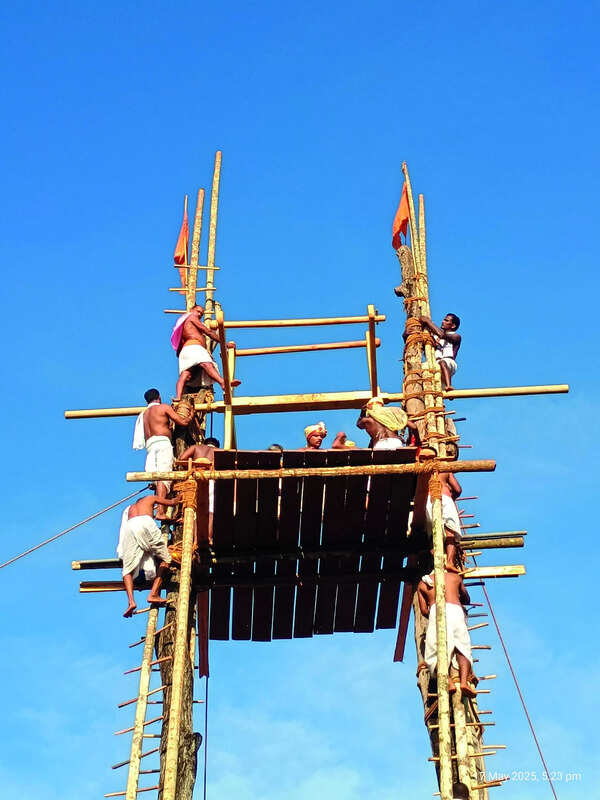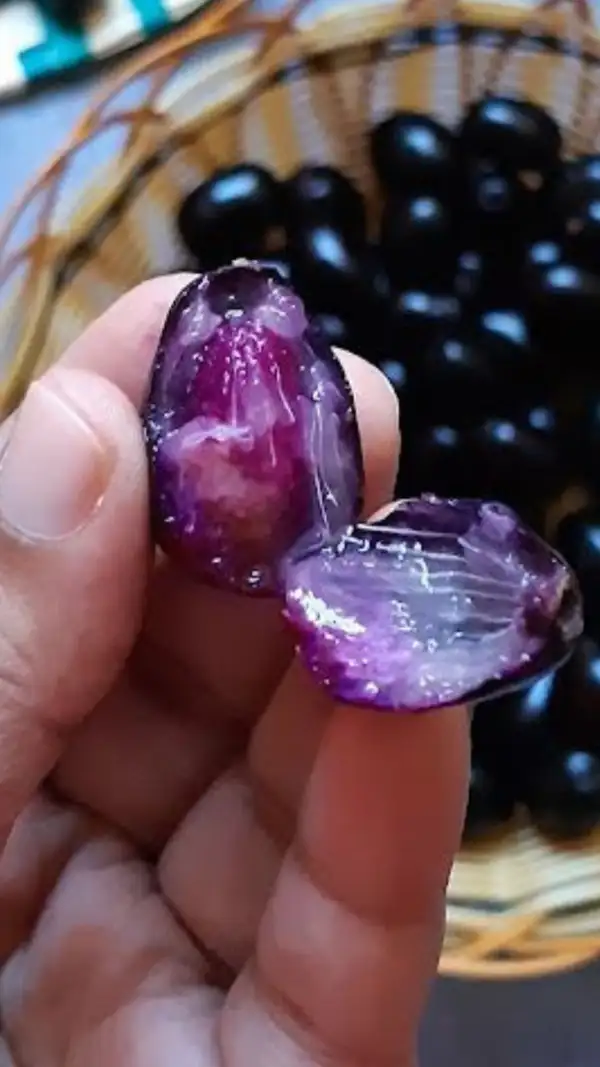Ancient traditions unfold at Poinguinim’s Gadyaanchi jatra
Canacona:Gadyaanchi Jatra was celebrated recently with thousands of devotees flocking to Mahalwada, Poinguinim. The jatra, held every three years in May, celebrates Lord Betal, a deity of Poinguinim and neighbouring villages.A ritual called 'Jevnni' is performed in the first year. In the second year, a procession called 'Ttakaa' takes place, and in the third year, the Gadyaanchi Jatra is celebrated with religious fervour.It is believed that Betal had conquered 12 talukas in Goa, along with Poinguinim, in the 13th century. The villagers asked him to live in Poinguinim and offered a jatra every three years in return. Since then, the famous Gadyanchi Jatra has been celebrated.The two Taranga, Satri and Pillkucho (peacock feathers), are brought to the place before the jatra.Two exceptionally large tree trunks called Khaamb, around 40-45 feet tall, are put in front of the Betal temple. A huge wooden spindle called Raat with four arms is fixed on the Khaamb.On the day of the jatra, the image of Betal in the temple is decorated traditionally. The decoration of the temple has remained unchanged for years.

End of Article
Follow Us On Social Media










